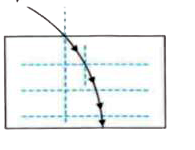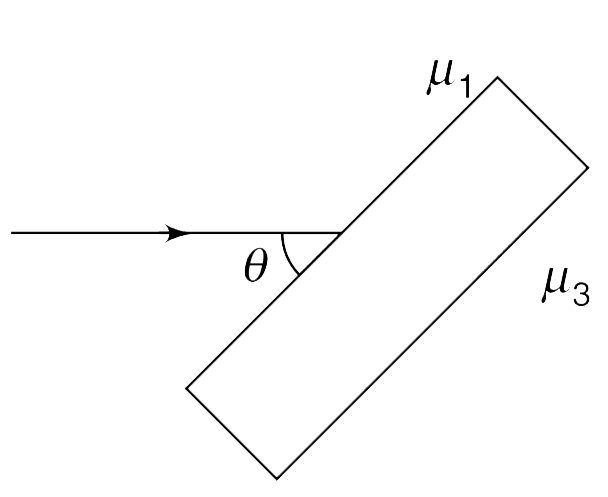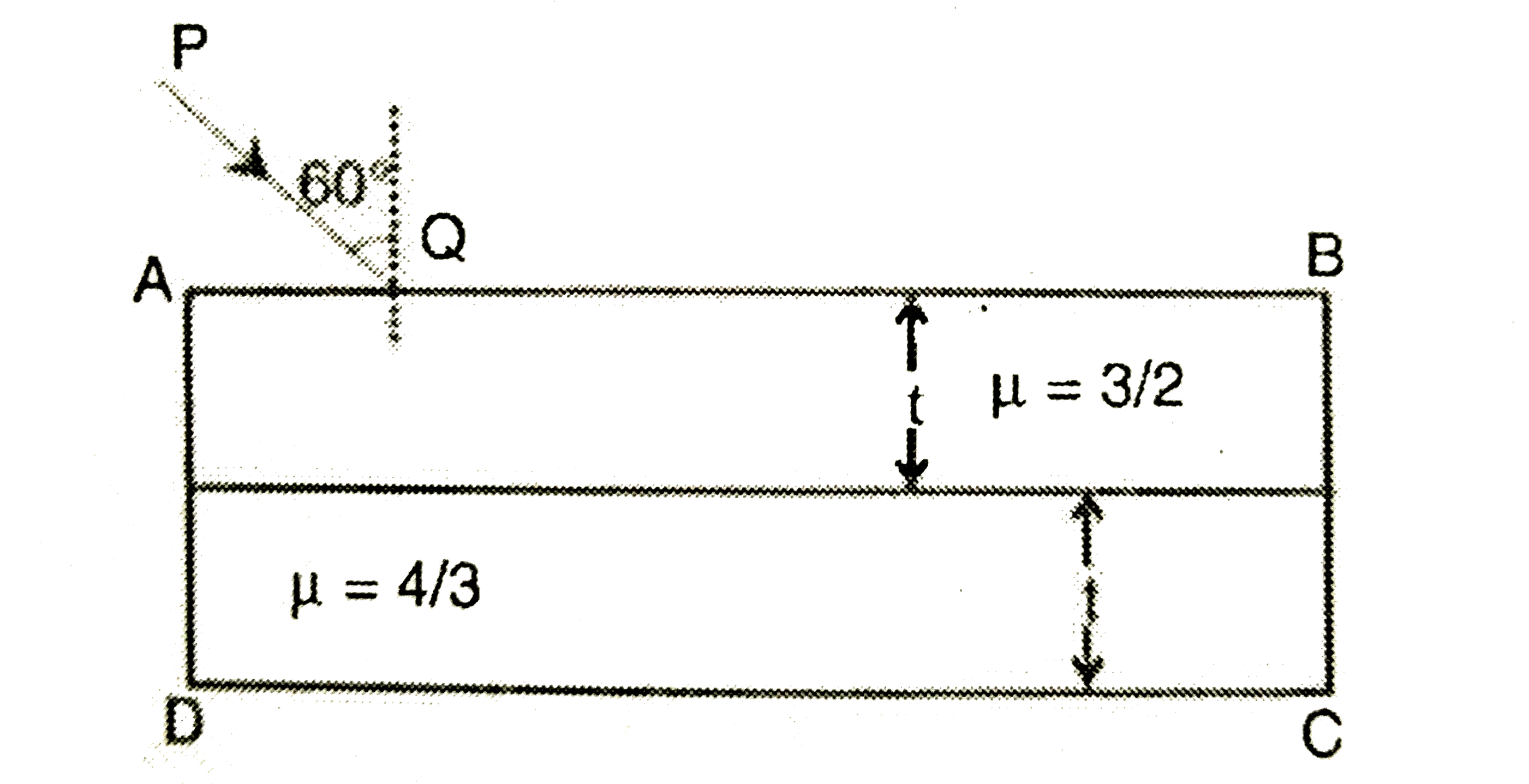A glass slab is made such that the refractive index of the material increases with its depth. The glass slab is kept in air and a light ray is incident on its top face. How will the light ray pass through it ?
As the slab is kept in air, the light beam is moving from a rarer medium to denser medium, thus it will bend towards the normal. But, as the refractive index of the slab is increasing with depth, the light beam will experience similar refraction at a number of points and traces a curved path as shown in the adjoining figure.

Topper's Solved these Questions
- RAY OPTICS AND OPTICAL INSTRUMENTSBook:MODERN PUBLICATIONChapter:RAY OPTICS AND OPTICAL INSTRUMENTSExercise:Tough & Tricky (PROBLEMS)
Explore 20 Videos
- RAY OPTICS AND OPTICAL INSTRUMENTSBook:MODERN PUBLICATIONChapter:RAY OPTICS AND OPTICAL INSTRUMENTSExercise:NCERT FILE SOLVED (TEXT BOOK EXERCISES)
Explore 38 Videos
- RAY OPTICS AND OPTICAL INSTRUMENTSBook:MODERN PUBLICATIONChapter:RAY OPTICS AND OPTICAL INSTRUMENTSExercise:PRACTICE PROBLEMS (11)
Explore 4 Videos
- NUCLEIBook:MODERN PUBLICATIONChapter:NUCLEIExercise:CHAPTER PRACTICE TEST FOR BOARD EXAMINATION
Explore 15 Videos
- SEMICONDUCTOR ELECTRONICS METERIALS DEVICES AND SIMPLE CIRCUITS Book:MODERN PUBLICATIONChapter:SEMICONDUCTOR ELECTRONICS METERIALS DEVICES AND SIMPLE CIRCUITS Exercise:CHAPTER PRACTICE TEST FOR BOARD EXAMINATION
Explore 12 Videos
Similar Questions
What is lateral displacement of a light ray passing through a glass slab ?
View SolutionA glass slab made of a material of refractive index n1 is kept in a medium of refractive index n2.
A light ray is incident on the slab. Draw the path of the rays of light emerging from the glass slab, if n1=n2
View Solution
Knowledge Check
A ray of light is inciden rormally on a glass slab of refractive index μ of thckness 'd' which is at a distance x from the glass. The ray of light takes same time to reach from source to slab and to reach from sorce to slab and to pass through the slab.
The thickness of the slab isAμxBxμCμxD(μ−1)x
A glass slab made of a material of refractive index n1 is kept in a medium of refractive index n2.
A light ray is incident on the slab. Draw the path of the rays of light emerging from the glass slab, if n1<n2
View SolutionA glass slab made of a material of refractive index n1 is kept in a medium of refractive index n2.
A light ray is incident on the slab. Draw the path of the rays of light emerging from the glass slab, if n1>n2
View SolutionA light ray travelling in a medium of refractive index μ1 is incident on a parallel faced glass slab making an angle of θ with the glass surface. The refractive index of the medium on the other side of the glass slab is μ3(>μ1). Find the angular deviation suffered by the light ray.

View SolutionA glass slab ABCD is made of two different grades of glass of refractive indices 32and43 of equal thickness, and a ray PQ is incident on the face AB. Trace the ray as it passes through the slab and find the angle of emergence and the angle of deviation, Find the effective refractive index of the slab.

View SolutionA light ray is incident at 45∘ on a glass slab. The slab is 3cm thick, and the refractive index of the glass is 1.5. What will the displacement of the ray be as a result of its passage through the slab? At what angle will the ray emerge formn the slab?
View SolutionA ray of light is incident on a glass slab at grazing incidence. The refractive index of the material of the slab is given by μ=√(1+y) . If the thickness of the slab is d=2m, determing the equation of the trajectory of the ray inside the slab and the coordinates of the point where the ray exits from the slab. Take the origin to be at the point of entry of the ray.
View SolutionA ray of light is incident on a glass slab at grazing incidence. The refractive index of the material of the slab is given by μ=√1+√y. If the thickness of the slab is d, determine the equation ofthe trajectory of the ray inside the slab and the coordinates of the point where the ray exits from the slab. Take the origin to be at the point of entry of the ray.
View Solution
